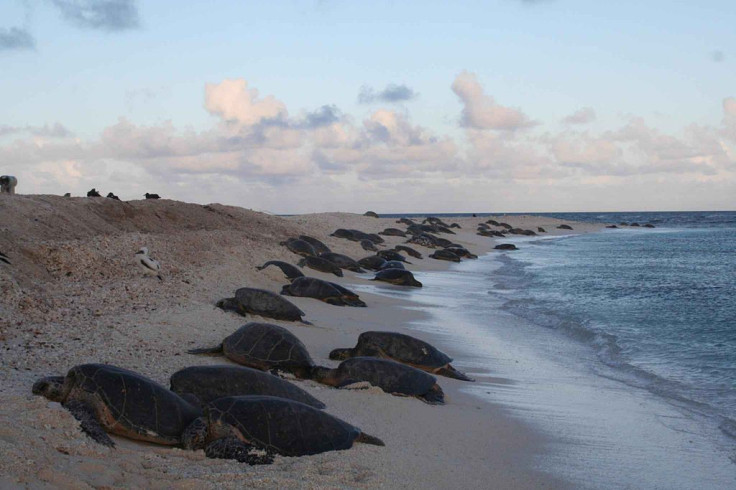Red Tide In Mexico Kills Nearly 300 Endangered Green Sea Turtles

KEY POINTS
- A red tide event in Mexico has caused the deaths of nearly 300 Pacific green sea turtles
- The rescued sea turtles were observed to be having difficulties breathing
- Volunteers try to save the animals by wrapping them in wet towels
- Green sea turtles are already considered endangered
Nearly 300 Pacific green sea turtles have been found dead on the southern Pacific coast of Mexico since Christmas due to a red tide algae bloom. The turtles found along the coast were having difficulties breathing or keeping their heads up, and volunteers have been trying to prevent them from asphyxiating by keeping them on land, either in shallow tubs of water while wearing life jackets or wrapped in wet towels.
So far, 292 sea turtles have died from the algae bloom, and only 27 of the animals have successfully been saved. According to environmental protection authorities, the autopsies revealed that the turtles had consumed sea salps that possibly had accumulations of algae toxins.
This is rather sad news for the species as it was also only in 2018 when over 300 turtles classified as vulnerable were found dead off the coast of Oaxaca after they got entangled in illegal fishing nets
Green Sea Turtles
Green sea turtles are some of the largest sea turtle species, and they are so named after the greenish color of their fat and cartilage, not the color of their shells. They can be found mostly in tropical and subtropical waters, and they tend to migrate long distances between feeding grounds and the beaches where they hatched.
Green sea turtles are already classified as endangered, which means that they are already in danger of extinction throughout all or a significant portion of the population. Main threats to the species include hunting of the adults, overharvesting of their eggs, loss of nesting beaches, and being caught in fishing gear.
Red Tide
Red tide is a phenomenon caused by algal blooms wherein the algae becomes so widespread that coastal waters get discolored and turn red. When this happens, the oxygen in the water gets depleted and the algae may release toxins that can cause wildlife and even humans in the affected area to get ill.
Red tide events can be brought about by factors such as warm ocean surface temperatures, high nutrient content, calm seas and low salinity, as well as rain followed by sunny days during summer. Once the event begins, it can spread to other places by winds, ships, currents and storms.
It is, so far, unknown why red tide algae create hazardous toxins, but most of the illnesses and deaths associated with the red tide have been attributed to consuming shellfish during red tide blooms.
© Copyright IBTimes 2024. All rights reserved.






















